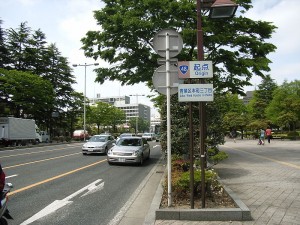Driving in Japan
Japan’s large metropolitan areas have great public transportation systems. It’s not rare to find adults without a driver’s license in big cities such as Tokyo, Osaka, and Nagoya. However, outside big cities, being able to drive a car comes in very handy. If you are thinking about driving during your next trip to Japan. Here is some advice:
You cannot drive in Japan with only a U.S. drivers license. Short-term visitors need to obtain International Driving Permits. These are issued in the U.S. by the American Automobile Association (AAA) or the American Automobile Touring Alliance (AATA). Since you cannot obtain an International Driving Permit in Japan, you must plan ahead and apply for one in the U.S. before your trip. And remember, when you drive in Japan with your International Driving Permit, it has to be accompanied by your U.S. driver’s license. Carry both!
If your stay in Japan is more than a “short-term”, you must obtain a Japanese driver’s license.
For more information about driving in Japan with an International Driving Permit or a Japanese driver’s license, go to Metropolitan Police Department website.
Embassy of the U.S. in Tokyo also offers helpful information for U.S. citizens considering driving in Japan.
Other than obtaining an International Driving Permit, it is also important to familiarize yourself with Japanese road rules. The most important thing to note is that cars drive on the left side of the road! The driver’s seat is on the right, like England.
Typically, speed limits are 80 to 100 km/h (apx. 50 to 62 mph) on highways, 40 km/h (apx. 22 mph) in urban areas, 30 km/h (apx. 19 mph) in side streets, and 50 to 60 km/h (apx. 31 to 37 mph) elsewhere.
Japan Automobile Federation (JAF) issues Rules of the Road in English. Please see their website for more information.
